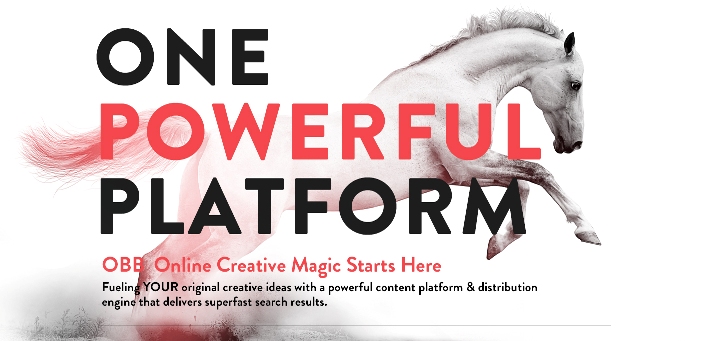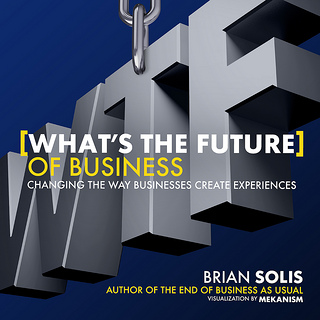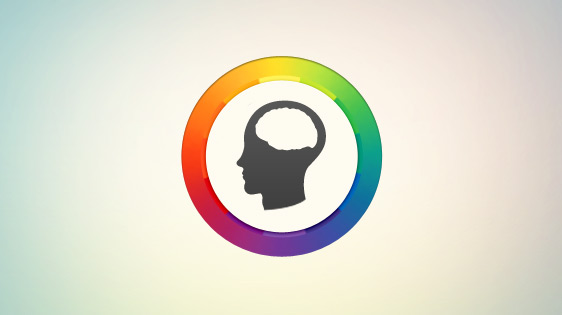 I write this article because I want to discuss the notion that bigger is better and bring up the idea that smaller can be beautiful and more often than not can produce much more effective results. I will be out of the country on a working vacation and wanted to leave you with thoughts on a subject I feel very strongly about.
I write this article because I want to discuss the notion that bigger is better and bring up the idea that smaller can be beautiful and more often than not can produce much more effective results. I will be out of the country on a working vacation and wanted to leave you with thoughts on a subject I feel very strongly about.Â
I am also sharing these thoughts in hopes that it might encourage decision makers to remember what most likely made them successful and open their minds again and take a look at the same types of people they once were and may have forgotten.
Â
I talk to and meet so many incredibly talented innovative people who have the knowledge, talent and drive to do the best job because they are motivated more by the doing than the bottom line.
Â
 I know from my years of experience that one size fits all cookie cutter solutions are not the best answer. I do know that anyone who has had the acumen to make it happen by doing it themselves are the most creative and motivated resource you will find. Along with the creative, customer service from a smaller more nimble company is second to none and the ability to customize solutions to each individual’s needs by being able to take the time necessary to understand and address those needs.
Â
People who are self-challenged and who are simply driven to think out of the box to come up with creative solutions are the people who are going to make a difference. These are the people who really care about you because they know what it is like to run a business and not just sell a product or service.
Â
For almost 40 years I have subscribed to “small is beautiful†because it is the only way you can retain control- meaning being able to stay true to yourself, be able to focus on being creative and maintain the flexibility to serve your clients in the best ways possible.
Â
Is bigger really better? Think about it, share your thoughts or at the least remember what probably got to where you are today.
William Cosgrove
The Three Biggest Challenges Internet Departments are Facing
Tags:
It’s always fascinating for us at AutoUSA to learn about the trends in the market, the changes in customer behaviors and the challenges faced by our dealers. This year’s annual survey results highlighted an evolving marketplace, where customer behavior is changing and forcing dealers to examine their processes, and their positioning in the market.
According to the results from AutoUSA’s annual Internet Marketing survey, the following were chosen as the three biggest challenges that Internet departments are facing:
1) Not Enough Leads (26% of respondents chose this as a major challenge)
Dealers don’t seem to be getting the hoped-for volume of leads they want or expect from their websites. This is interesting because two years ago, “keeping up with lead volume†was the number one challenge. In spite of increased spending on websites and SEO/SEM, and increased traffic, it seems dealers are failing to convert visitors into leads.
To me there’s a simple explanation for this. Consumer expectations and behavior have changed in the last two years. Today’s customers want to be in control of the car-buying process, while many dealers also want control of the process. As a result, dealers and dealer website vendors are saying “It’s all about the lead, give me the lead,†while their customers are saying “It’s all about the information, give me the information.†So when a customer visits a website and is bombarded with chat pop-ups, lead forms and can’t find the information they are looking for (such as price or payment information), they are going to leave the website and find the information somewhere else.
This trend isn’t going to change. Dealers must adapt and give customers the information they want, otherwise they risk losing them to a competitor. Remember, a customer visits only 1.8 dealerships on average before making a vehicle purchase. That tells me today’s consumer has already done the majority of their research online before heading out to their top two dealership choices.
Dealers that focus on the customer’s website experience – making it user-friendly, full of helpful content, and making it convenient for the customer to walk themselves through the process – are more likely to draw customers in than websites that are designed solely as a virtual brochure or to get the customer’s information. Conversion tools that are useful to customers, including trade-in calculators, showroom-visit incentives, and payment quoting tools give customers a compelling reason, or even a reward, to submit their information.
Instead of battling for control, dealers should be helping customers with their search for information. Chances are, those who help the most will be one of the 1.8 dealerships visited.
2) Not Enough Staff (20% of respondents chose this as a major challenge)
Staffing issues tend to be a perpetual challenge year after year, according to our surveys. Whether it’s not enough staff, the quality of staff, staff turnover or staff not following processes – it’s clear that many dealers believe that finding, training and keeping the right staff is a never-ending challenge.
But is it really the staff that’s the problem, or is it that many dealerships haven’t changed their sales model to reflect the state of the market? It’s well accepted that nearly 90% of car buyers start their search online. They, like the majority of us, are used to transacting business regularly online, whether it’s buying books, music, electronics, shopping for homes or travel. The Internet is a common tool, but many stores still treat it as a stand-alone department. We continue to see progressive, successful dealerships with high volumes in Internet sales adopt a model where every salesperson is also equipped to handle Internet inquiries so they can scale to serve more “leadsâ€.
3) Quality of Staff (19% of respondents chose this as a major challenge)
As a young sales manager, I was taught by my GM that a salesperson’s failure (and their subsequent departure from our dealership) was my fault. You hire a skill set, train the desired behaviors, and manage execution of the processes so that you have the best-quality staff possible.
There are many new hires who do not receive enough training and are not held accountable when they don’t follow processes. If quality of staff is your greatest challenge, take ownership of that and improve the quality of your staff, and consequently the customer experience, by providing training and expecting excellence.
Salespeople can be trained to follow Internet processes; it’s no different than training them how to take phone calls or how to deal with customers in person, just a different method of communication.
Other major challenges cited in the survey were as follows:
4) Staff does not consistently adhere to written processes (18%)
5) Marketing budget not large enough to accomplish objectives (18%)
6) Keeping up with lead volume (17%)
7) Lack of staff accountability (16%)
8) Lack of management buy-in (16%)
9) Lack of staff training (15%)
10) High staff turnover (9%)
What is your Internet department’s greatest challenge? How have you dealt with some of these challenges?
POSTED BY Josh Vajda

Innovation is the key to change. The creative spark to constantly make things better is what fuels our imaginations. We are constantly inventing new product features. From a gallery application that morphs into a screen wide display map to mobile applications involving images – we come up with innovations and news features to the OneBigBroadcast platform almost daily.
Our creative team is always pushing the envelope of the newest browser features that result in stronger branding and better user experiences. While the creative team is conceptualizing our platform team works hand and hand constantly inventing new ways of displaying important content or coming distributing it far and wide for maximum social value.
Change happens so much here at OneBigBroadcast that we often don’t take any notice of it. In fact we come up with major changes and innovations almost every week.
Those same changes and innovations then become part of the overall platform as upgrades and the entire user base benefits from the innovative spirit alive here OneBigBroadcast.
One thing is for certain - we've got some great new features and applications just about to be released that will help take your business to the next level!
To get a glimpse into innovation at work check our how our blog engines work and how one post touches between 100 and 345 social touch points all connecting back to enhance your oveall brand's visibility. That's why change is good
See blog Data Touch Points Here
 Pinterest has quickly evolved from a simple idea to one of the most popular, revenue generating social media platforms. In the last 5 months alone Pinterest has grown its user base 43.7 percent to more than 70 million. These users aren't merely pinning pictures; they're buying products.
Pinterest has quickly evolved from a simple idea to one of the most popular, revenue generating social media platforms. In the last 5 months alone Pinterest has grown its user base 43.7 percent to more than 70 million. These users aren't merely pinning pictures; they're buying products.Most social media channels lack the ability to drive non-assisted conversions and rely on attribution to justify spend. New studies are constantly being released showing that referral traffic from Pinterest converts directly into e-commerce conversions.
So how can SEO professionals and e-commerce companies unlock the potential of this new channel?
SEO: Acquire More LinksBuilding relationships is at the core of any ethical, results-oriented link building campaign. Identifying related bloggers and key influencers is the first step toward building these relationships and acquiring new links.
Pinterest is a great way to discover new blogs for your outreach campaign. Pinterest's search functionality makes it easy to find relevant boards. For example, if you work with or for a lawn care provider you may search on Pinterest for “weed control†boards and get the following result:

There are so many related boards and pins that I could have scrolled for hours.
In order to boost your outreach program it's important to only focus on Pins that were linked from a website as opposed to simply uploaded by a user. Every website you find is now a potential site to get a link from.
It's also important to pay attention to key influencers even if they don't pin from a website. Most users will link other social media handles with their Pinterest account. If you identify a popular user in your niche, check to see if they have a Twitter account that may include a website that they own or blog for.
E-commerce Brands: Sell More ProductsThe vast majority of online retailers aren't capitalizing on the revenue potential that exists on Pinterest. Images are an extremely powerful tool that can increases sales exponentially.
What channel is seeing the largest budget and click growth amongst online retailers? What's driving all of Google's incremental ad revenue? Answer: Product Listing Ads! (For more information on the growth of PLAs check out this post.)
Pinterest is slowly but surely moving to a paid model that will mimic Google PLAs. A few months ago they introduced Rich Pins, which give advertisers the ability to include price and availability information for various products (and now Pinterest will alert users when prices drop). They have also expanded their analytics package to give advertisers more information around how users interact with their pins (translation: products).
To maximize your revenue on Pinterest, it's critical that all of your products are pinned.
Utilizing rich pins will increase your conversion rate and attract users who are buy mode. To take advantage of this new feature, companies have to format their product in one of two ways:
- oEmbed
- Semantic Markup using Open Graph or Schema.org
If you don't have the dev resources to implement the proper formatting or get rejected by Pinterest, there are still other options to get your products listed. The boards for your brand should mimic your category and sub-category structure.
Below is an example for Dick's Sporting Goods golf category. Any of their golf categories or sub-categories would be great candidates for potential Pinterest boards.
Written By George Fischer
Dealernetservicesonline.biz
 Have you ever wondered what the future of business will look like? Maybe you figured it’s going to be something like business in the past: buy stuff, sell stuff, try to make a profit by selling stuff for more than it cost you to make it, building a better mousetrap, winning friends and influencing people, crossing the chasm, riding the long tail to the tipping point with the other outliers, going from good to great, and dealing with cheese that keeps moving around.
Have you ever wondered what the future of business will look like? Maybe you figured it’s going to be something like business in the past: buy stuff, sell stuff, try to make a profit by selling stuff for more than it cost you to make it, building a better mousetrap, winning friends and influencing people, crossing the chasm, riding the long tail to the tipping point with the other outliers, going from good to great, and dealing with cheese that keeps moving around.The future of business won't be like that. The future of business is all about dazzling people with amazing customer experiences, says Brian Solis, whose new book, What’s the Future of Business? Changing the Way Businesses Create Experiences, has a cover with the letters “WTF†in huge block letters -- a hint, perhaps, that this is not going to be some ordinary business book, but rather a radical manifesto about change, innovation, and disruption. It's business with a dash of irreverence and punk rock thrown in, a little sneer that says, Look, people, the world has changed, there's this thing called social media, have you heard of it?Â
In this new world, the marketing of products becomes as important as the products themselves. Marketers are the ones who create experiences. Which means suddenly marketers stand at center stage, instead of off in the wings. Suddenly all eyes are on you. Are you ready for your close-up? Read this book and you will be.
The Influencers' Influencer Who is this Brian Solis? Folks at HubSpot know him as a pal who will be speaking at our INBOUND conference this August alongside Arianna Huffington, Seth Godin, and Nate Silver. But according to the book jacket, Solis is “globally recognized as one of the most prominent thought leaders in new media,†as well as a “digital analyst, sociologist, and futurist.â€Â He's an influencer's influencer, whose blog, BrianSolis.com, is considered a must-read for marketers. Solis is a rare web intellectual, a guy who can melt your brain on Twitter but can also think and write convincingly in chunks of more than 140 characters. At INBOUND, Brian will talk about how the pace of innovation has sped up and impacted the pace of change within business overall, and probably expand upon the ideas presented in his book.
His Bold Ideas But what is the book about? It has one big takeaway. Companies are on a journey of transformation. We’re living in an age of digital Darwinism where you must innovate or die, all because consumers are more empowered than ever with the internet at their disposal.
And in this new age, Solis argues that we shouldn't segment these consumers by age -- Generation X, Generation Y, Generation Z, Boomers, and Matures. Instead, we should use “Generation C,†in which the C stands for Connected. Generation C serves as umbrella to describe consumers who are active on the internet and social media, regardless of age. “Gen C is not an age group -- it is a way of life,†he proclaims.
In this worldview, the binary is between those who are Connected and those who are Not Connected. The chief distinction is that, “To Gen C, experience is everything. What they feel about your products and services now and over time is shared through these connected networks.†The challenge for brands is to design the experience that those people will have, and “design the journey that they will embark on.â€
Too many companies are using social media but still not really talking to customers -- and that’s partly why they fail to deliver a complete experience, Solis asserts. Presumably these companies deserve points for trying, and it's nice that they've hired someone to run their Twitter feed, but they’re not making the most of the medium. To paraphrase the late great Steve Jobs: You’re doing it wrong. Solis shows you how to do it right.
What’s the Future of Business: Changing the Way Businesses Create Experiences is an ambitious and ultimately optimistic look at the challenges companies face as they adapt to a digital world, a world where empowered and ever more demanding consumers bring to each transaction a new set of expectations. It’s not just a how-to book, though plenty of advice is offered. Rather it is a call to arms, a call to action, a wake-up call to brands in every industry, a book that will help anyone in marketing do a better job of surfing the storm of change that surrounds us. A must read.
Also, don’t forget to come see Brian Solis speak at the INBOUND conference Aug. 19–22 in good old Boston.
DealerNet Services
 The psychology of color as it relates to persuasion is one of the most interesting—and most controversial—aspects of marketing.
The psychology of color as it relates to persuasion is one of the most interesting—and most controversial—aspects of marketing.
The reason: Most of today’s conversations on colors and persuasion consist of hunches, anecdotal evidence and advertisers blowing smoke about “colors and the mind.â€
To alleviate this trend and give proper treatment to a truly fascinating element of human behavior, today we’re going to cover a selection of the most reliable research on color theory and persuasion.â¨
Misconceptions around the Psychology of Color
Why does color psychology invoke so much conversation … but is backed with so little factual data?
As research shows, it’s likely because elements such as personal preference, experiences, upbringing, cultural differences, context, etc., often muddy the effect individual colors have on us. So the idea that colors such as yellow or purple are able to invoke some sort of hyper-specific emotion is about as accurate as your standard Tarot card reading.
The conversation is only worsened by incredibly vapid visuals that sum up color psychology with awesome “facts†such as this one:â¨

Don’t fret, though. Now it’s time to take a look at some research-backed insights on how color plays a role in persuasion.â¨
The Importance of Colors in Brandingâ¨
First, let’s address branding, which is one of the most important issues relating to color perception and the area where many articles on this subject run into problems.
There have been numerous attempts to classify consumer responses to different individual colors:â¨

... but the truth of the matter is that color is too dependent on personal experiences to be universally translated to specific feelings.
But there are broader messaging patterns to be found in color perceptions. For instance, colors play a fairly substantial role in purchases and branding.
In an appropriately titled study called Impact of Color in Marketing, researchers found that up to 90% of snap judgments made about products can be based on color alone (depending on the product).â¨
And in regards to the role that color plays in branding, results from studies such as The Interactive Effects of Colors show that the relationship between brands and color hinges on the perceived appropriateness of the color being used for the particular brand (in other words, does the color "fit" what is being sold).â¨
The study Exciting Red and Competent Blue also confirms that purchasing intent is greatly affected by colors due to the impact they have on how a brand is perceived. This means that colors influence how consumers view the "personality" of the brand in question (after all, who would want to buy a Harley Davidson motorcycle if they didn’t get the feeling that Harleys were rugged and cool?).â¨
Additional studies have revealed that our brains prefer recognizable brands, which makes color incredibly important when creating a brand identity. It has even been suggested in Color Research & Application that it is of paramount importance for new brands to specifically target logo colors that ensure differentiation from entrenched competitors (if the competition all uses blue, you'll stand out by using purple).
When it comes to picking the “right†color, research has found that predicting consumer reaction to color appropriateness in relation to the product is far more important than the individual color itself.⨠So, if Harley owners buy the product in order to feel rugged, you could assume that the pink + glitter edition wouldn't sell all that well.
Psychologist and Stanford professor Jennifer Aaker has conducted studies on this very topic via research on Dimensions of Brand Personality, and her studies have found five core dimensions that play a role in a brand’s personality:

(Brands can sometimes cross between two traits, but they are mostly dominated by one. High fashion clothing feels sophisticated, camping gear feels rugged.)
Additional research has shown that there is a real connection between the use of colors and customers’ perceptions of a brand’s personality.â¨
Certain colors DO broadly align with specific traits (e.g., brown with ruggedness, purple with sophistication, and red with excitement). But nearly every academic study on colors and branding will tell you that it’s far more important for your brand’s colors to support the personality you want to portray instead of trying to align with stereotypical color associations.â¨
Consider the inaccuracy of making broad statements such as “green means calm.†The context is missing; sometimes green is used to brand environmental issues such as Timberland’s G.R.E.E.N standard, but other times it’s meant to brand financial spaces such as Mint.com.
And while brown may be useful for a rugged appeal (think Saddleback Leather), when positioned in another context brown can be used to create a warm, inviting feeling (Thanksgiving) or to stir your appetite (every chocolate commercial you’ve ever seen).
Bottom line: I can’t offer you an easy, clear-cut set of guidelines for choosing your brand’s colors, but I can assure you that the context you’re working within is an absolutely essential consideration.
It’s the feeling, mood, and image that your brand creates that play a role in persuasion. Be sure to recognize that colors only come into play when they can be used to match a brand’s desired personality (i.e., the use of white to communicate Apple’s love of clean, simple design).
Without this context, choosing one color over another doesn't make much sense, and there is very little evidence to support that 'orange' will universally make people purchase a product more often than 'silver'.
Color Preferences by Gender
Perceived appropriateness may explain why the most popular car colors are white, black, silver and gray … but is there something else at work that explains why there aren’t very many purple power tools?â¨
One of the better studies on this topic is Joe Hallock’s Colour Assignments. Hallock’s data showcases some clear preferences in certain colors across gender.â¨
It’s important to note that one’s environment—and especially cultural perceptions—plays a strong role in dictating color appropriateness for gender, which in turn can influence individual choices. Consider, for instance, this coverage by Smithsonian magazine detailing how blue became the color for boys and pink was eventually deemed the color for girls (and how it used to be the reverse!).â¨
Here were Hallock’s findings for the most and least favorite colors of men and women:â¨
Men’s Favorite Colors

Women’s Favorite Colors

Men’s Least Favorite Colorsâ¨

Women’s Least Favorite Colors

The most notable points in these images is the supremacy of blue across both genders (it was the favorite color for both groups) and the disparity between groups on purple. Women list purple as a top-tier color, but no men list purple as a favorite color. (Perhaps this is why we have no purple power tools, a product largely associated with men?)
Additional research in studies on color perception and color preferences show that when it comes to shades, tints and hues men seem to prefer bold colors while women prefer softer colors. Also, men were more likely to select shades of colors as their favorites (colors with black added), whereas women were more receptive to tints of colors (colors with white added):


Keep this information in mind when choosing your brand’s primary color palette. Given the starkly different taste preferences shown, it pays to appeal more to men or women if they make up a larger percentage of your ideal buyers.â¨
Continued here The Psychology Of Color In Marketing And Branding
Written by Gregory Ciotti
DealerNet Services
 What sets your company apart from everyone else’s? It’s the brand – and creating a better business starts with this key factor. Without a really good one, nothing sets your enterprise apart from the next one, and this won’t have customers clamoring to do business with you. Therefore, take a hard look at this aspect of your company, and figure out where any changes need to be made. Your business’s brand is essentially your promise to your customer, according to Entrepreneur magazine, and it sets the tone for all future relations. It is what sets you apart, and it is a reflection on everyone who works for a company. With a poor one, even the best products and services could be ignored. When it comes to branding your business, be the industry standard. Let customers know exactly what they are dealing with and the quality of services they should expect.
What sets your company apart from everyone else’s? It’s the brand – and creating a better business starts with this key factor. Without a really good one, nothing sets your enterprise apart from the next one, and this won’t have customers clamoring to do business with you. Therefore, take a hard look at this aspect of your company, and figure out where any changes need to be made. Your business’s brand is essentially your promise to your customer, according to Entrepreneur magazine, and it sets the tone for all future relations. It is what sets you apart, and it is a reflection on everyone who works for a company. With a poor one, even the best products and services could be ignored. When it comes to branding your business, be the industry standard. Let customers know exactly what they are dealing with and the quality of services they should expect.
It all starts with the logo
Not surprisingly, one of the first elements of a brand people see is the logo. That is why it is crucial to make it the best it can possibly be. The logo can make or break a company, and while it is often the first element seen, it can frequently be the last thing remembered. Think about all of the iconic logos - BMW, Coca-Cola, Nike – the list could go on for a long time, but the point is that they are all quite memorable in their simplicity. This is the ultimate goal for branding your business. Create the perfect logo so a customer can’t get it out of their head.
“Other people have to be able to speak for your brand,†said Jonah Berger, associate professor of marketing at the Wharton School of the University of Pennsylvania. “You love your company, you think your company is great, but if you’re not around, what are people going to be able to remember? And what are they going to tell others?â€
Therefore, when starting to craft a brand identity, it is best to keep it simple. The iconic logos previously mentioned all had something in common – simplicity. That is one of the major reasons as to why each one stays in your head. They manage to convey a lot about a company while not being distracting or overly ambitious. For example, Apple started with a more complex version of the logo we all know today. If you remember, it used to be rainbow-colored, and the more intricate predecessor of the plain, black or grayscale version apparent on many tech items today. Berger added that the easier it is to look over a logo, the more desirable it becomes. Apple was smart to simplify - it was less difficult to see the apple and remember with less bells and whistles. Most of the iconic logos have fewer than three colors, and this is for good reason.
To make a company really stand out over a long period of time, the logo also needs to be flexible. What this means is that a company can’t get locked in to an idea. Something that works now might not work in five years, or 10 years, and so on. Perhaps it may not even work in a shorter amount of time, and it is up to management to be able to change quickly and not let affection or ego cloud good business strategy. For example, the Apple logo speaks perfectly to this. The rainbow-colored one was great when the company was a fraction of the global giant it is today, but things change, and the bright, multi-faceted fruit doesn’t convey the same connotations that its monotone counterpart does now.
All of these elements speak to memorability. Don’t make it difficult for a customer to remember your business. Help them along, and at the same time try to convey as much as possible about what the company does. Take a simple concept and give it a small slice of spice, like when Apple decided to take a bite out of its logo.
A great brand should “help them remember that you exist and what you stand for,†added Berger - without a little variety, “it might be easier to process, but [you'd] be less likely to remember, because it looks exactly like a million things you’ve seen before.â€
The best way to know if the methods you use for branding your business are working it to try them. Put a new logo out there and see what people think.
Keep your brand short, sweet, and adaptable
The concepts many businesses use for marketing change often. If your company can’t change right along with them, odds are it won’t succeed. According to Inc. magazine, the old themes of business marketing involved creating a product that has broad appeal, reaching an audience as large as possible and creating a recognizable brand name that can span multiple products. While elements of these hold true in some fashion, the marketing world is evolving, and your company should too.
Due to the growing technologies available today, it requires a different touch to brand well. The Internet and media have divided consumers into smaller categories, and it has also shortened attention spans and has turned many people into the “what have you done for me lately?†types. Therefore, the strategies you use need to be customized to appeal to very specific consumers.
Therefore, a great business brand should target a specific type of person - one that is most likely to buy your product. This brand should attempt to gain support among these consumers, which will help bring new business in. In addition, customer feedback will help define your brand in the future, setting the tone for future marketing strategies. Listen to everyone - social media can be a great way to get instant opinions.
New strategies are more narrow than the older ones, and a business really has to know who its clientele is. The best method for branding your business is to let your consumers dictate the direction. What makes your brand memorable, and what branding strategies do you want to implement in the future?
by Amy Atwood
DealeNet Services
Â
 When you think of sales, do you think of pejoratives such as pushy, sleazy and dishonest? Most people do.
When you think of sales, do you think of pejoratives such as pushy, sleazy and dishonest? Most people do.
Yet in “To Sell Is Human: The Surprising Truth About Moving Others,†Daniel H. Pink contends that most of us, regardless of job title or salary structure, are salespeople.
What?
Sales, broadly defined, means moving people to action, which people must do well to be successful.
This “non-sales selling†doesn’t involve a purchase—it simply means persuading, influencing and convincing others. Not only does this comprise 41 percent of total work time, according to an international study with 9,057 respondents that Pink paid for, but people say it’s the most productive use of their time.
While only one in nine Americans works in sales per se, the other eight are selling others on learning chemistry, on using new media for marketing, or on exercising more.
What Pink calls “EdMedâ€â€”healthcare and education—has a large sales component. This is the biggest job sector in the U.S., with more workers than manufacturing, retail and professional and business services, and projected to grow the most.
Pink, following up bestsellers “A Whole New Mind†and “Drive,†wants to clean up its bad reputation and recast sales not as a way to get the best of others, but to improve the world. As he explains the book’s title, “Moving others doesn’t require that we neglect these nobler aspects [idealism and artistry] of our nature . . . Today it demands that we embrace them.â€
Pink’s ABCs Of Sales
Some of Pink’s advice is supported by conventional wisdom but not all; Pink draws heavily upon sometimes surprising social science research.
“Attunement†is the first thing we should learn. If we don’t understand others, how can we hope to persuade them?
It’s about getting into their heads with perspective as well as hearts through empathy. Powerful people are prone to losing touch with others’ perspectives. So paradoxically, reducing one’s power or becoming humble is a must.
Mimicry helps. If you subtly mirror another’s gestures, you will seem more in tune, but if the other person senses your mirroring is staged, he or she will be turned off.
Surprisingly, extroverts don’t make the best salespeople, but neither do introverts.What works best is being an “ambivert,†which is most of us in the middle of the bell curve. Extreme extroverts are often awful listeners and can be pushy, while an extreme introvert can lack initiative and the ability to close a deal. Ambiverts who can tack back and forth between extroversion and introversion do better at attunement.
If you think your failures are “permanent, pervasive and personal,†you lack “buoyancy.†Those who bounce back, says Pink, attribute rejection to circumstances: it’s a slow economy, he’s having a bad day.
Positive emotions are contagious, so when negotiating, taking a friendly tone and smiling works better than being adversarial, despite what’s portrayed in movies. Your positive emotions (gratitude, interest, contentment) should outnumber negative (anger, shame, sadness) by at least 3-1 but not going over 11-1. Too much risks detachment from reality—not taking responsibility for what one can control and learning from failures is important.
It’s less important to motivate yourself with clichés like “I’m the best†than to simply ask, “Can I do it?†A question opens you up to problem solving and boosts confidence.
The final attribute, “clarity,†means the “capacity to help others see their situations in fresh and more revealing ways and to identify problems they didn’t realize they had.â€
Today people often have all the facts at hand—they just need help applying information. For example, maybe you thinks you need a better presence on Facebook when you’ll find more leads elsewhere, or maybe a bad website is actually holding you back more than your social media strategy—redefining the problem to better meet goals is what standout salespeople excel at.
In this paradigm brainstorming trumps quick fixes and the successful sellers are the ones who take the time to develop relationships and understand their clients.
Putting It All Together
“Pitching,†“improvising†and “serving†are three tactics Pink highlights for putting your skills to work.
He identifies six “successors to the elevator pitch†including:
- the one-word pitch: President Obama’s re-election pitch, “forwardâ€
- Reagan’s question pitch: “Are you better off today than you were four years ago?â€
- the memorable rhyming pitch: “If the glove don’t fit, you must acquitâ€
- the email subject line pitch: pithy and specific, “10 Selling Tipsâ€
- the Twitter pitch: don’ts include complaints and “here’s what I had for dinner†(does anyone like hearing that?)
- the Pixar pitch, a six-sentence structure, part of which often introduces a movie’s trailer: “Once upon a time _____. Every day, _____. One day ___. Because of that, ___. Until finally ___.â€
Every sales pitch, Pink shows, can be put into each of these formats.
Pink then visits an improvisational acting coach to understand how improv can expand the repertoire of business people. In her hilarious memoir “Bossypants,†Tina Fey also elaborates on how improv comedy works. Here’s the basics, per Pink:
- Say “yes and,†not “yes butâ€
- Make your partner look good
- Hear offers
The final suggestion, in what I consider the takeaway of this book, is to be a server, not a taker. Don’t “upsell,†which is a “detestable†word; “upserve,†he exhorts. Treat everyone as you’d treat your grandmother. Rethink the idea of sales commissions.
Â
Â
By Linda Rastelli
DealerNet Services
Â
Â
Â
Listen To Your Mother: Advice For Making The Sale On Your Website (Part 2)
Tags: A wise person would have taken my mother’s advice the first time.
A wise person would have taken my mother’s advice the first time.
Alas, when it comes to shopping online there are hurdles and derailments in every corner, waiting to sabotage your efforts. And my mother finds them all.
Why does that matter?
Because my mother is retired and she has a laptop that goes everywhere with her, from home to vacation home. She’s not very tech-savvy but she’s quick with a mouse and has a disposable income. In other words, she’s your customer.
Or she could be, if you didn’t screw the whole thing up so badly!
It’s been three years since my mother and I began our phone ritual of her complaining about a website and me writing it down.
She’s had a lot to say about customer service along the way and plenty on the subject of websites that don’t work.
She may be just one person but where there’s one there are more. They visit your website and silently leave, never to be seen or heard from again. They may not vocalize their frustrations but they’re certainly acting on them – or failing to act, by refusing to buy from you.
If you’re not convinced, just listen to my mother…
Mother Says: What The Heck Is It?
“People should try to shop on their own sites,†she says. “Do you think they’d buy something if they had no idea what it was?â€
She’s talking about the shower curtain.
She wants a new one for the guest bathroom in her vacation home. Her vacation home is strictly beach-themed. And the shower curtain she wants has a pattern of small… somethings… that may or may not fit with the theme.
“Is it a duck? Maybe it’s a seahorse. I have no idea.â€
Maybe you’ve been there. Maybe you’ve tried to shop for anything from home décor to clothing and been unable to discern polka dots from plaid, or in this case, ducks from seahorses.
“Sites need a zoom feature. You can’t just look at something that small and say, ‘Oh, ok, I guess it’s fine…’ You have to know what you’re buying. Do you know what I did? I got a magnifying glass.â€
She says this with a mix of disgust and triumph – how dare “they†make her resort to such stupid tactics, but kudos to her for thinking of it.
“You know what it was? A seagull! A big, fat, ugly seagull!â€
If there’s one thing my mother hates it’s birds of any sort. If there’s another thing that pulls in at a close second it’s being forced to interpret some aspect of a product that should have been clearly identified by the “click to zoom†function or mentioned somewhere in the product description.
And my mother may hate birds but she is really pissed by the effort involved in discovering the birds. The birds have come to represent the entire site. And she’s totally gone.
“And do you know what else?â€
The thing about crummy websites is that there is usually a “what elseâ€.
“Half the time the alternate colors don’t work. So when you see a color called ‘majestic’ how the heck are you supposed to know what that looks like? What the heck color is ‘majestic’?â€
I have to admit, I have no idea.
If You Want Her To Buy, You’d Better Show Her What It Is
I don’t think this is an issue that needs belaboring. If you haven’t figured out by now that your product photos matter then you can go back and read her previous complaints to the same effect.
Or you can try shopping your own site and looking objectively at your seahorse/duck/bird patterns to be sure another human being – perhaps one with imperfect eyesight – can tell what they are.
And for the sake of overburdened brains everywhere, avoid cute marketing-y sounding descriptions in favor of real ones. If you need help crafting product descriptions, go read this post.
No matter how you slice it, “majestic†is not a color.
Lesson Learned: Details Matter
It could be the indecipherable photos or indescribable colors. Or maybe even the lack of photos and color details. If you’re not paying attention to how your products appear to your customers you just may not have any customers to worry about.
It’s definitely tough to be objective about your own inventory so do yourself and your sales a favor and find an outsider to give you honest feedback.
It could be as simple as recruiting your mother.
Â
Â
A colleague, cousin or Twitter acquaintance will do just as nicely – as long as they are dead honest and maybe even a little nitpicky. Because trust me, your customers will be.
by Carol Lynn Rivera
DealerNet Services
Â
Â
Â
Why Entrepreneurs Are Animals—And How That Can Help You Get Ahead
Tags:
Ever regretted a business decision you made in the heat of the moment?
Most of us have. And most of us have felt the urge to yelp with excitement when we win a big success, too.
That’s your inner animal at work. Literally at work; you don’t leave it behind when you’re taking care of business!
You might like to think you’re a cool, clear-headed entrepreneur making rational decisions, but what’s really going on underneath is a bit… messier. Whether you know it or not, you’re acting and reacting just like an animal.
Here’s why:
Why Entrepreneurs Are Animals
Your business decisions are strongly influenced by your hormonal state. Yep, even if you’re a man. In fact, the effect is typically stronger in men, because a lot of it is testosterone-based.
John Coates, a Wall Street trader turned neuroscientist, found that fluctuating testosterone and cortisol levels have a massive influence on the decisions we make. He’s seen the effects first-hand on the trading floor, and his research shows that we’re no different than other animals in our hormonal behavior.
Testosterone is released into your bloodstream during a victory, a risk or a competition. It’s like a chemical battle cry that echoes through your blood, your brain and your body.
In times of stress and uncertainty, your body produces cortisol, which has the opposite effect. It’s calming in small amounts, but too much leaves you feeling exhausted, anxious and depressed.
What does this all mean for your professional life? Well, if everyone’s decisions are influenced by their hormonal state, you can use that knowledge to further your ambitions.
Understand Your Inner Animal to Get Ahead
Coates calls it the “winner effectâ€: the excitement of competition and success prompts your body to produce testosterone. That influences your brain to make riskier decisions, and for a while you keep winning bigger and bigger, smashing through targets like a charging rhino.
In the end, of course, overconfidence turns one of those optimistic gambles into a failure. You kick yourself (how did you fail to see it coming?) as cortisol floods into your bloodstream, making you anxious and miserable.
You try to protect yourself by avoiding further risk, which means you miss out on worthwhile opportunities until your hormones level out and you regain your confidence. If this had a name, I guess it would be the “loser effect.†But don’t worry; you can turn it around!
Once you know how your hormones affect your judgement, you can consciously correct for these effects and keep your business decisions on a more even keel:
- When you’re feeling cortisol-stuffed and risk-averse, remind yourself to look rationally at any trade-offs you’re considering. If the benefit is high and the risk is small, maybe you should give it a chance!
- Remember that asking for help when you need it is a sign of professional strength, not weakness. Don’t let a cortisol downer isolate you from your support network.
- Understand that a little bit of testosterone and risk does you good, making you more productive and successful at work—as long as you’re not overdoing it.
- When you’re feeling on top of the world with a testosterone high, remember that it’s a long way down! Rein in your risk-taking urges a little and consult with colleagues or friends to find out if they think your plans are genius or just plain nuts.
- Notice when your hormones are being manipulated to influence your decisions. Brands likeThe Sales Lion and Shark Tank, for example, aren’t named after large predatory animals by sheer chance; they’re designed to appeal to the testosterone in an ambitious entrepreneur like you!
Learn to Tame the Animal in Others
You aren’t the only one who gets hormonal, you know. It’s every single one of us.
We get angry, tearful, euphoric or nervous because our hormones overrule rational thought. Every business meeting or transaction is influenced by these biological factors, so let’s learn to work with that.
If you know a contact or colleague has just suffered a setback in their business or personal life, remember that cortisol will make them less interested in opportunities that carry any kind of risk. You might want to offer brief, friendly condolences and wait a while before bringing them your latest proposal. Or perhaps you can frame your idea as a risk reduction. “Let me take responsibility for X and you’ll never have to worry that it’s been overlooked again†could work pretty well at a time like this.
The flip side of this is to press your advantage when you know someone’s on a testosterone roll. They’ll be feeling exuberant and generous in victory, so make the most of it. In other words, ask for a raise or promotion the day your boss wins an award, and you’re more likely to get your wish!
Whatever your ambition, understanding our animal biochemistry will help you to achieve it. Armed with this knowledge, you can survive even the worst moments of your career with dignity and take full advantage of the best.
You’re an animal. Recognizing that gives you power. Use it wisely, and you’ll be unstoppable!
Sophie Lizard is a freelance blogger and copywriter on a mission to help entrepreneurs boost their income and professional reputation by blogging for hire. Download her free Ultimate List of Better-Paid Blogging Gigs to get started with 45 blogs that pay $50 or more!
CALENDAR
CATEGORIES
TAGS
TWITTER POSTS
CALENDAR
- powered by
- One Big Broadcast
- creative by
- WebStager
© 2025 One Big Broadcast | All rights reserved

